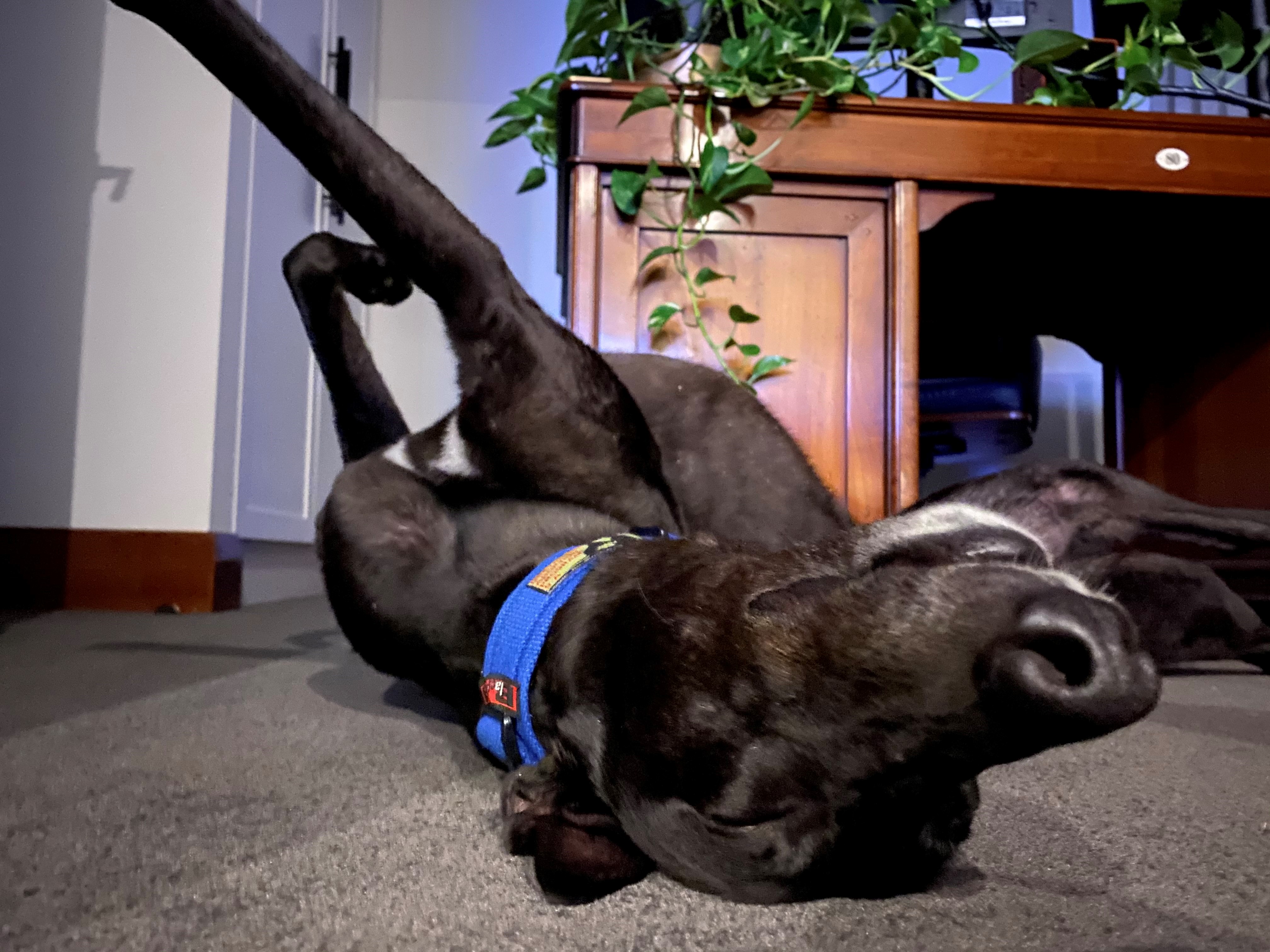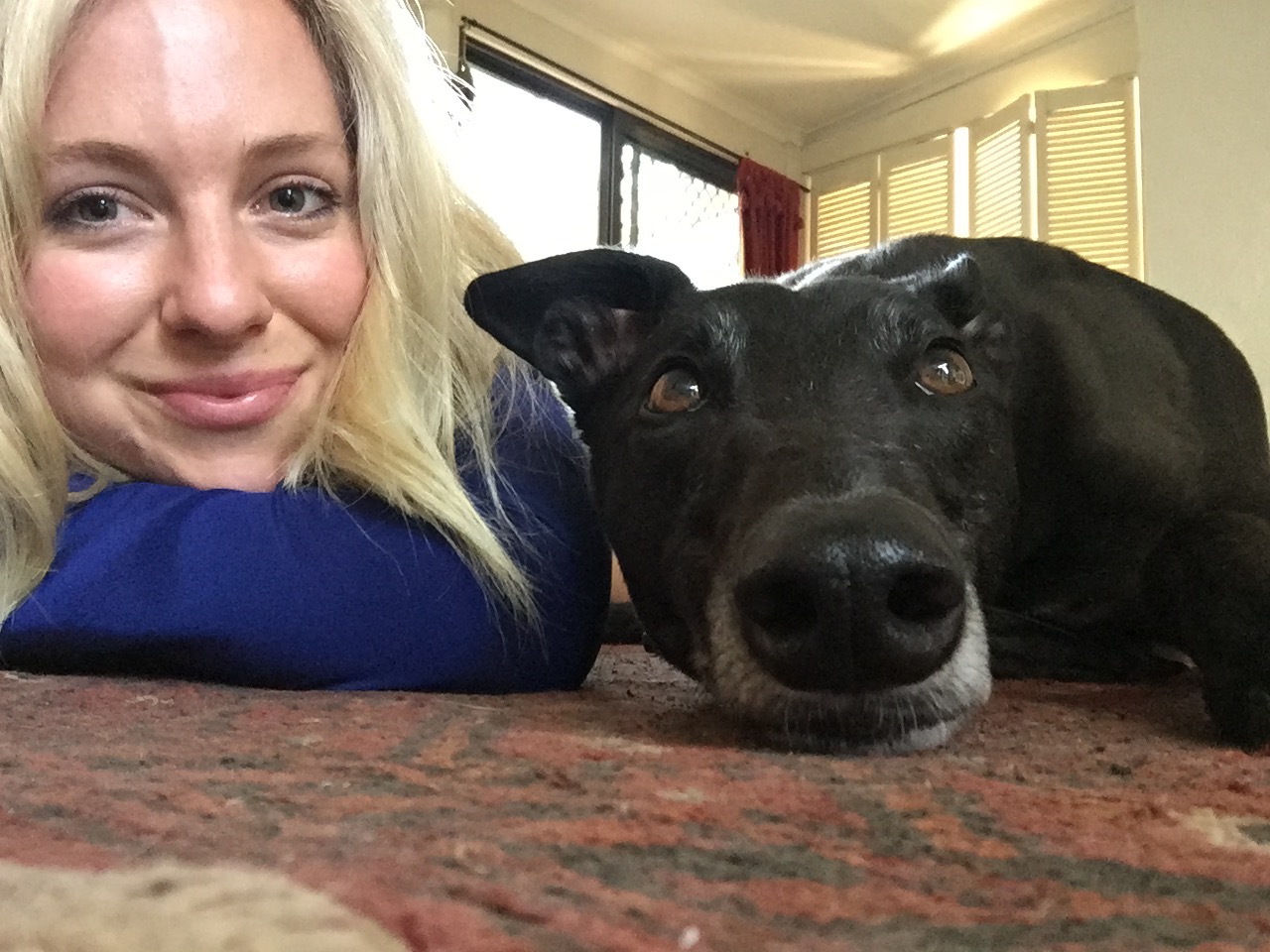5 Benefits of Adopting an Older Greyhound
May 16, 2022
5 Benefits of Adopting an Older Greyhound
1) Easy to Achieve Activity Levels

Older greyhounds require a baseline activity of around 20 minutes, twice a day. You can expect your older greyhound to sleep for an average of 16 to 20 hours a day. As they age, greyhounds are awake for relatively short episodes of interaction, such as for walks and feed times. During the rest of the day, you’re likely to find them having a nice snooze on your sofa. Combine this with a few walks, and you’ll have a very tired pooch on your hands! We recommend greyhounds can access the great-outdoors where possible
While some greyhounds are happy to stay in a backyard (and this can be appropriate for owners with suitable properties or dogs), it’s important that they can access the outside environments for enrichment.
Going for walks outside the home helps the dog to experience other facets of life (i.e. different smells), socialising and practicing helpful commands, such as a recall on lead.
Ideally, this skill-building will translate into other aspects of the dog’s life. If you had to take them out to the vet, for example, they’ll be more prepared for this new experience.
2) Predictable Behaviour
Older greyhounds have had time to mature, so their behaviours are typically more predictable than a puppy or younger dog (who are more subject to change) subsequently they are easier to understand and predict as pet owners.
Greyhounds are usually fully mature by around the age of two. By the time greyhounds reach five years old, they should have a stable personality and greater life experience behind them.
Genetics play a large factor in influencing greyhound behaviour and personality. For many animals, including dogs, the maternal experience is a large catalyst. This could range from the individual traits of the parent dogs, as well as how the dog is cared for as a puppy by humans.
To better understand their behaviour, all dogs in the Greyhound Adoption Program (GAP) undergo repeated tests while they are in our care. They're gradually exposed to new environments and to pet life to acclimate them.
Our offices are set up like a home environment where they can spend time with our team in a comfortable setting while walking and meeting other dogs. We also have a helper team of dogs and cats that can assist with socialising them in case they are being considered to join a home with other pets.
Our affiliated owners and trainers are also encouraged to undergo pet preparation. We offer several seminars as well as informational materials that help owners and trainers socialise dogs in their care.
3) Developed Social Skills
While in our care, we allow our greyhounds to walk and to gain experience with other dog breeds both great and small.
As they're gradually introduced to domestic life and socialisation, we’ll observe their behaviour using greyhound assessment reports to gain a better understanding of the dog, both in commonplace scenarios and rarer ones, such as meeting a dog at a fenceline.
After much socialisation, older greyhounds are better positioned to know what they like, and what they dislike and will usually communicate this using subtle cues. We provide this information to each owner, as well as specific training advice for social skills. This should assist new owners to be informed about their dog’s preferences.
Once you bring your greyhound home, the behaviour team at GAP is always on hand to answer any questions and help your new companion adjust to their new home.
4) More Time in Care

While many adopters are looking for younger greyhounds to enjoy for as long as possible, there’s plenty of old-timers that want to be your new best mate.
Greyhounds typically have a lifespan of approx 15 years. So there’s plenty of older greyhounds in our care with several years of life, love and companionship left to give.
Older dogs do end up spending more time in our kennels. For new owners, this additional time is beneficial as these dogs have been:
- Serviced by our behaviourists for longer
- Had extra time experiencing normal pet life
- Are ready for a transition into new home environments
- Have undergone training, walking and assessments
The average age of the greyhounds entering our program is about four years old. Once they’re in our care, they’ll spend around six weeks on average in the GAP adoption centres until they’re selected for adoption.
The benefit of housing greyhounds in our facilities is that they’re constantly receiving training (such as food manners or walking nicely on a leash). While they’re in our care, the training doesn’t stop! The longer a dog stays with us, the more they’re conditioned and trained to be great companions.
5) Increased Companionship

An older, retired greyhound makes an ideal everyday companion. When you wake up, you can count on them to either be still asleep - or waiting for you to cook breakfast (they’ll take some bacon in exchange for licking the pan clean).
They’ll wait for you while you work, providing they’ve had a little walk and the opportunity for enrichment. They’ll greet you when you get home. They’ll love to play tug of war later on. After the evening walk, you can bet they’re keen to sit around the telly.
At GAP SA, we love to help old souls find their soulmates.
Considering Adopting or Fostering an Older Greyhound?
We’d love for you to come and meet a range of older, wonderful greyhounds looking to meet someone like you.
Video-conference & in-person greyhound meetings are available:
- We perform an extensive matching process
- You will be supported by GAP behaviourists
- We offer reduced adoption fees for older greyhounds. Be sure to ask our team for more information
Please use our greyhounds for adoption page to start looking!
Back to all news

